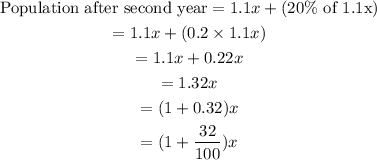Answer:
32%
Explanation:
Let the initial population of the town = x
First Year
In the first year, the population increases by 10%.

Second Year
In the second year, the population increases by 20%.

We see at the end of the second year, the initial population, x has increased by 32%.
The net increase in the population across the two years is 32%.